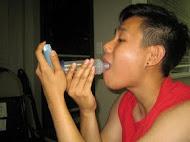Patients suffering from asthma have high chances of getting asthma attack. Some of the common symptoms that will show you that a patient has the attack include difficulty in talking, breath shortness and change of lips or fingernails to blue color. Read the article to understand how you can handle such emergency situations.
Follow Asthma plan
If the victim has a personal asthma action plan from a doctor it is advisable to follow it strictly. Follow the directions used to provide the medication and in case of an acute asthma attack seek medical help immediately.
Provide asthma attack first aid
If the patient does not follow any action plan, you need to offer first aid for asthma to rescue him or her from the fatal situation.
- Make the patient sit upright in a comfortable manner and make any tight cloth loose.
- If the patient has medications such as an inhaler, help him to use it.
- In case an inhaler is not available, use the one in your first aid kit or borrow from another person.
There are two types of inhalers, then one with a spacer and one without the spacer.
Using an inhaler with a spacer

- Remove the cap and shake it well.
- Insert it into the spacer.
- Make sure that the victim breathe out fully and put his mouth firmly around the mouthpiece of the spacer.
- Press the inhaler instantly in order to deliver a puff.
- Then, allow the patient to breathe in a slow manner through the mouth and then make him hold breath for ten to twelve seconds.
- Give four fluffs and wait for a minute between each of them.
Follow similar steps even when using an inhaler without the spacer.
If breathing is still an issue even after using the inhaler, follow these steps to deal with the asthma attack.
- After the four puffs, wait for extra four minutes. If the breathing does not normalize, giver more four puffs.
- If there are no changes continue giving four puffs until the emergency service provider arrives. In case the victim has severe asthma attack provide seven to nine puffs after every five minutes.
Monitor the victim until the emergency service provider arrives. If you recognize drowsiness, this means that the problem may be getting worse. You should also not assume that there is some improvement if no wheezing can be heard from the victim. This can also show that the asthma attack is going to another dangerous level.
